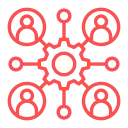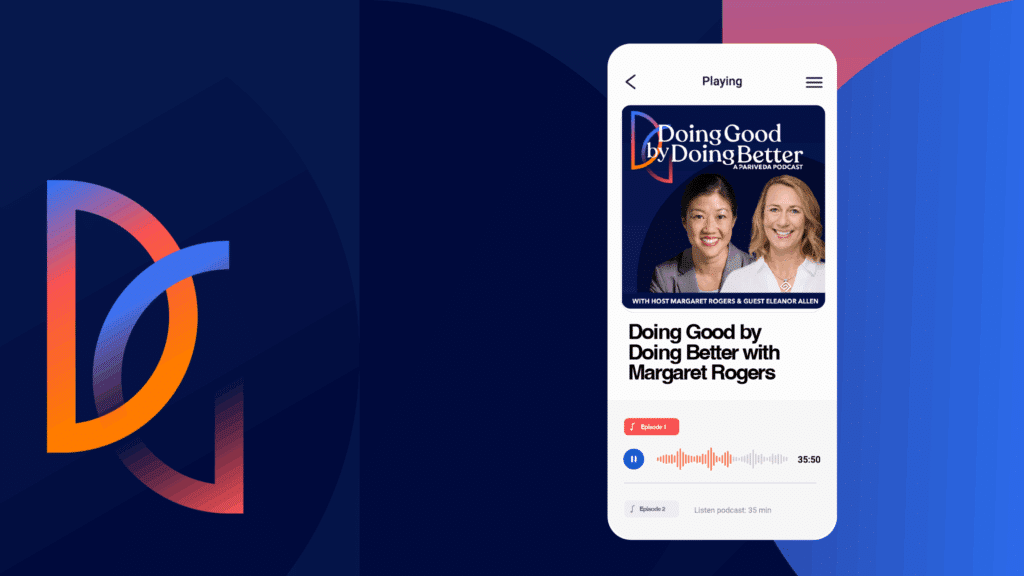FRAMEWORK
Fuel Product Innovation with Design Thinking
- Incorporating design thinking into product development improves the odds of creating solutions that resonate with users and align with business objectives.

Between a fast-paced digital landscape and rapidly changing market conditions, businesses must keep pace with technological advancements and evolving customer expectations to remain competitive. Organizations that can innovate effectively often achieve greater success and stronger ROI.
Statistics from the OECD Business Innovation Indicators reveal that a significant portion of businesses consider innovation essential for growth. A McKinsey Global Survey on digital strategy and investment found that organizations with strong innovation cultures excel at leveraging digital investments to gain a competitive edge. According to a recent study by BCG, 83% of companies rank innovation as a top-three priority, yet only 3% consider themselves “innovation-ready.”
Leaders increasingly recognize the need to adopt new ways of working and foster an innovation culture to effectively accelerate their competitive differentiation.
Design thinking as a catalyst for bridging aspiration and execution
Design thinking is a human-centered approach to innovation that integrates the needs of the people, the possibilities of technology, and the requirements for1.
While rooted in design principles, design thinking is a powerful methodology for anyone tackling complex problems through creativity and collaboration. Leading brands like Apple, Nike, and Uber have adopted design thinking to fuel their innovations. It’s important to note that design thinking is more of a mindset than a framework; hence, there is no single definition or rigid process but rather a set of core principles.

EMPATHY
Design thinking starts with people. Focusing on user needs, challenges, and experiences can uncover insights that ensure the solution addresses the right problems and provides real value.

IDEATION
Be bold and unafraid to try new ideas. A design thinking mindset encourages open-minded thinking to generate a wide range of possibilities. Expansive thinking without judgment can unlock bold, original ideas.

COLLABORATION
This approach breaks down silos across business functions and disciplines such as design, engineering, and marketing. Bringing together diverse perspectives and expertise can foster holistic and effective solutions.

ITERATION
Design thinking is not a linear process but one that encourages rapid prototyping and experimentation. Continuous feedback loops enable teams to quickly learn and refine ideas, minimizing risk and investment.
5 key steps to product innovation using design thinking
At Pariveda, we employ a design thinking approach to guide our clients throughout their product lifecycle–from ideation to deployment–to ensure user-centered solutions that deliver measurable outcomes. This approach draws on the well-known Empathize/Define/Ideate/Prototype/Test framework and incorporates Lean, Agile, and Product Thinking principles.
Before beginning, it is critical to understand your organization’s strategic objectives. This ensures that your product vision aligns with broader business goals and that your solution ideas will contribute to the business’s long-term success.
Sense & Empathize
Start by building a deep understanding of the behavior, motivation, and experiences of your customers or end users. This can be achieved through user research, interviews, and empathy mapping. Quantitative metrics (like usage analytics) can reveal demographic insights and preferences, while qualitative data (like customer reviews or sentiment surveys) can highlight satisfaction and frustrations.
Synthesize this data to sense who your customers and users are and build empathy for their needs, pains, and gains. Map the current state or as-is scenario to clarify the user journey from their perspective and identify pain points and unmet needs. Cross-reference this with market research to uncover opportunities for improvement that can also appeal to users beyond those you have today.
Focus & Envision
Armed with deep insights into the “Who” and the Why,” narrow your focus to the most critical problem to solve, aligning unmet needs with organizational mission and strategy. A clear problem statement that summarizes the main challenges and opportunities will help your team around a shared goal. Techniques like the “How Might We” exercise are a good way to clarify and refine this focus.
For products in the early stage of development or at the crossroads of a strategic shift, defining a product vision statement can serve as a “north star” for your product’s long-term goal or desired future state. It articulates the purpose and value to customers and stakeholders, providing guidance, alignment, and inspiration throughout the product development process.
Ideate & Prototype
This is the phase to “think big.” Innovation is about the art of the possible, and design thinking encourages brainstorming and open-minded thinking to foster a culture of creativity. Workshops are a great way to leverage the collective intelligence of diverse individuals to generate ideas quickly. Begin with divergent thinking–exploring as many different ideas as possible without judgment—then converge by narrowing potential solutions. This will help you get beyond the obvious, allowing new and breakthrough concepts to emerge.
Rapid prototyping is essential here, as it enables teams to experiment with different solutions quickly and refine ideas in real-time. Prototypes, whether simple paper or higher-fidelity wireframes, help test solutions with real users to validate assumptions and identify improvements early.
Test & Validate
With a prototype in hand, it may be tempting to move straight to building and bringing your product to market as soon as possible. However, testing with real users is essential to validating your assumptions and gathering feedback. This step will reveal what works and what doesn’t work so you can pivot or adjust, reducing the risk of developing solutions that fail.
The goal is to learn and refine, not to prove or confirm your ideas. By setting clear testing goals and hypotheses, results become actionable and guide further iterations until the product effectively meets user needs.
Build, Measure, Learn
Continue applying a user-centric and iterative approach as you develop and mature the product. This could mean starting with a minimum viable product (MVP) to test core functionality in real-world environments as early as possible. Gather quantitative and qualitative feedback to assess the product’s impact and ensure it aligns with the vision.
This ongoing cycle of building, measuring, and learning allows teams to make informed decisions on how to continuously refine and improve the product, ensuring that it evolves alongside changing user needs and market demands.
Design thinking offers a disciplined way to move into the future
Unlike traditional problem-solving, which typically begins with analyzing and correcting current known issues, design thinking starts by envisioning possibilities that don’t yet exist and builds a pathway to realize them. Incorporating design thinking into product development improves the odds of creating solutions that resonate with users and align with business objectives.
By iterating and learning continuously, organizations can streamline development and bring innovative products to market with greater confidence in their potential for success.




















